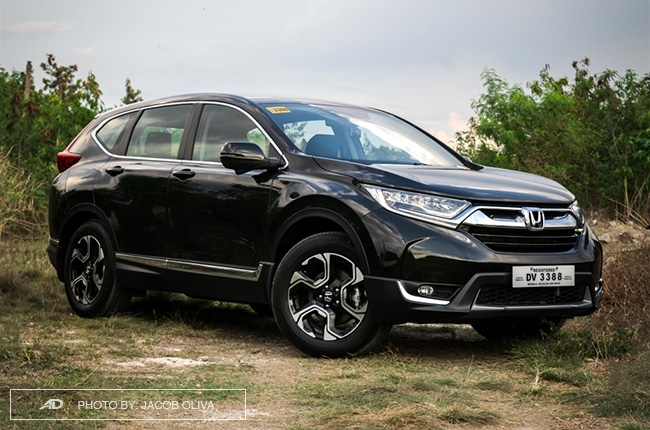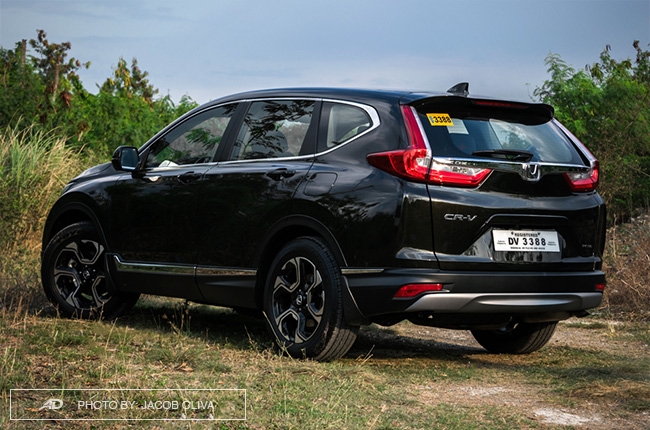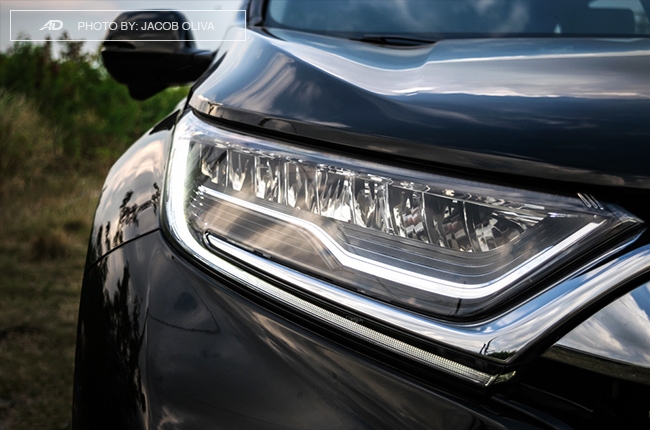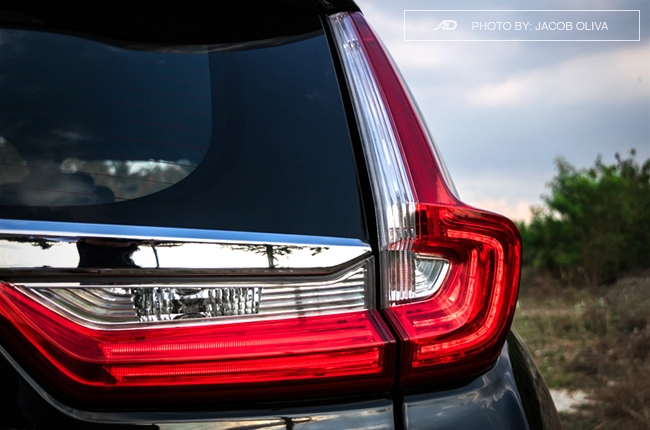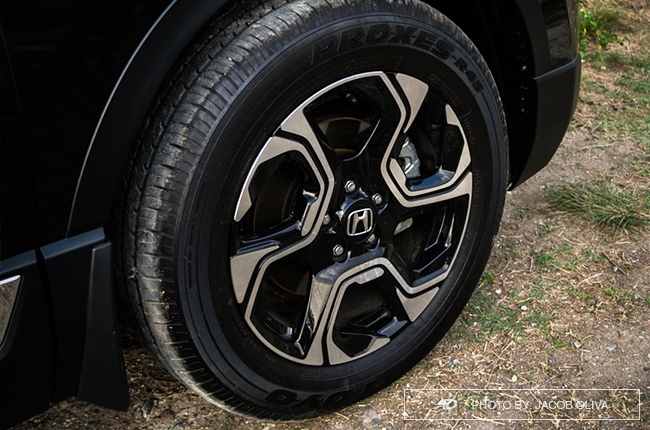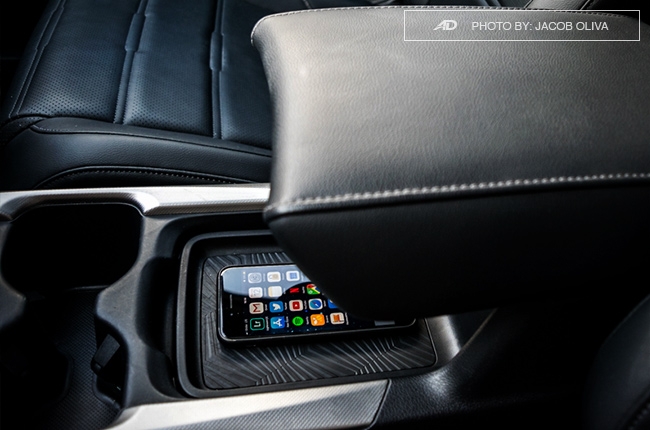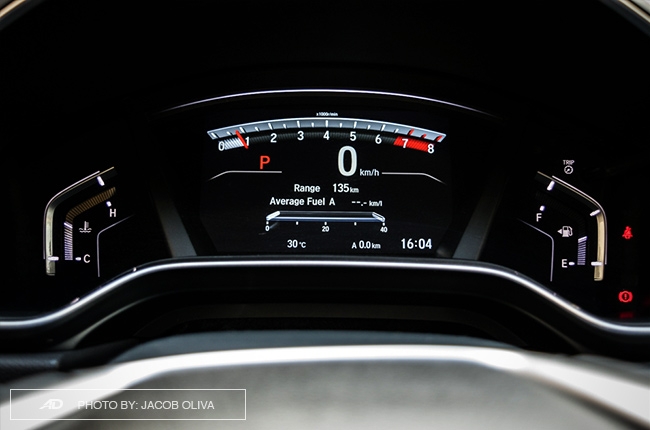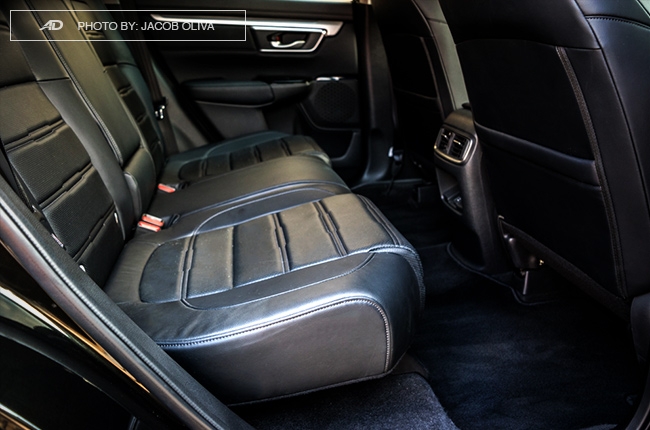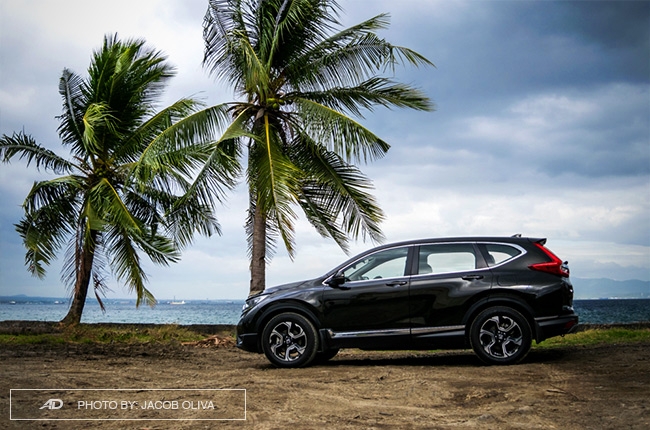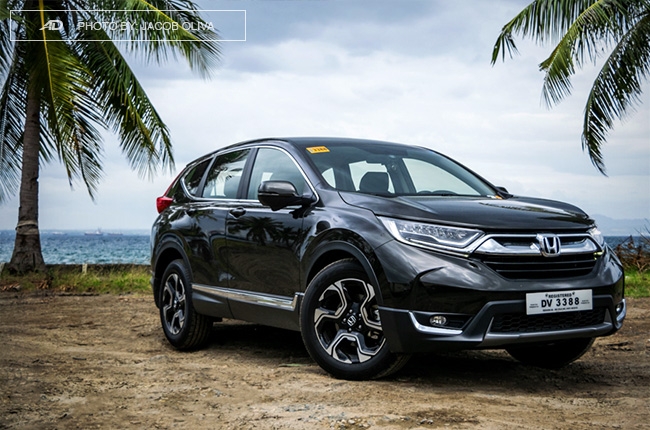
Base model cars are generally short in features when compared to the higher variants in its range, that’s why it’s cheaper than the rest and commonly referred to as the bare model. Some lack in technology, looks, and conveniences, which may detract those who want the best from their prospect car (granted that their budget permits it).
If you’ve noticed, I highlighted the word ‘generally’ because there is one model that begs to differ, specifically, the gasoline-powered 2018 Honda CR-V 2.0 S CVT. The arrival of its diesel-powered sibling sure made huge waves last year, but if you’re among those who aren’t fans of diesel, this one’s for you.
Engine Output (HP), Acceleration, Transmission, Handling 4.0/5
Exterior & Interior Design, Quality, Fit and Finish, Ergonomics 4.0/5
Cabin Comfort, Suspension, NVH Insulation 4.5/5
Convenience Technologies, Active and Passive Safety Features 4.5/5
Amount of the vehicle you get for the price, Fuel Efficiency 4.5/5
- Outstanding ride comfort.
- Several driver conveniences even for a base model.
- Highly-responsive engine.
- Some delay in shifting using the paddle shifters.
- Steering wheel's a bit light.
- Some buttons are sometimes hard to press.
While the aesthetics of other base models are significantly different from the range-toppers, the CR-V 2.0 S looks almost the same as the SX. From the 18-inch mags to chrome garnishing, LED daytime running lights, full LED headlamps and taillights, and to its shark’s fin antenna – both ends of the range looks nearly identical, except for two things: the 2.0 S loses the meshed grille and LED fog lamps of the SX.
Other than those, there’s none. Zero. Nada. Zilch. The 2.0 S gets all the goodies that make the CR-V a good-looking, beefy crossover from any angle. Oh wait, its badge on the tailgate says i-VTEC, which signifies the main difference between this entry-level variant to the rest of the CR-V range. We’ll get to that later.
Now, the front cabin is also almost identical with the top-of-the-line trim, except for the obvious ones like the presence of gear-shifter (bye-bye buttons) and the lack of faux-wood accents. You’re basically greeted inside with the same good-quality material from the SX that houses the Civic-derived layout.
Because of that, sitting on the driver’s seat feels nearly the same as what I felt when I tested the SX variant. Elbow rests are well-padded with soft leather, while gripping the steering feels nice. Even with the seat's manual adjuster, it’s quite easy to find a comfortable driving position.
Certain convenient driver features are intact with 2.0 S, like auto-leveling headlights, power up-and-down window, speed-sensing door locks, keyless entry, electronic parking brake with hold function, and the blind spot monitor that literally shows two to three lanes to your right when you use your right turn signal or press the button at the tip of the left stick.
The seven-inch display head unit is easy on the eyes and effortless to operate, which you can seamlessly connect to your smartphone via Bluetooth or USB. As a music lover, I love how its speakers sound, even if it’s minus four of what the SX had before. You’ve got to love that bass, really.
The biggest changes are found at the rear. The CR-V 2.0 S is a five-seater, as opposed to the seven-seater configuration of the diesel CR-Vs. With that, the leg- and wiggle-room is plenty at the rear seats, while passengers are kept comfy with air-conditioning vents found at the center console. Under the vents are USB ports where you can charge your gadgets.
Since there’s no third row, cargo space is abundant (522L) and can be maximized by folding the second row seats flat. The trunk cover can also be removed so you can utilize all that space.
The best trait of the CR-V is its ride comfort. Its suspension can absorb bumps, potholes, and rough roads effectively. This, together with its great noise isolation and mentioned interior space, makes the CR-V one of the most comfortable compact crossover out there.
Another proponent that adds to the CR-V’s notable ride comfort is how its 2.0L i-VTEC engine sends the power to the front wheels. This gasoline mill behaves almost the same as its 1.6L diesel counterpart – smooth delivery, eliminating abrupt acceleration. The disc brakes strongly bite, too, but it can be easily tamed to allow fluid braking.
With 154 hp and 189 Nm of torque waiting to be tapped, the CR-V, in its gasoline guise, isn’t short of power. Driving is mostly relaxed, but when needed, those numbers translate well onto the road. And, since it’s has a continuously variable transmission (CVT), gear-shifting isn’t an issue at all.
In case you need to shift manually, paddle shifters that simulates seven gears are available. I used the manual shifters on downhill winding roads for safer passage. Although just the same as with the SX, it’s a bit delayed.
Speaking of winding roads, a little understeer can be felt with the CR-V 2.0 S on such road type since it doesn’t come with the SX’s all-wheel drive system. The steering feels a little artificial, too, but tolerable. Other than those two, driving visibility is unimpeded and there are only few blind spots due to its huge side mirrors.

As this is the base model, Honda SENSING isn’t part of its package. That means no Adaptive Cruise Control, Lane Keep Assist, Lane Departure Warning, and Low Speed Follow. Good thing, there’s standard cruise control and proximity sensors.
With its driving behavior, the CR-V registered good fuel efficiency numbers, albeit, less economical than its diesel-powered counterparts. With the ECON mode off, snail-paced EDSA read 7.5 km/l, while faster runs during wee hours at 60 km/h average clocked in 13.8 km/l. Highway cruising nailed at 90 km/h was at 19.7 km/l. Fuel consumption is manageable thanks to the fuel eco coaching found in the gauge clusters.
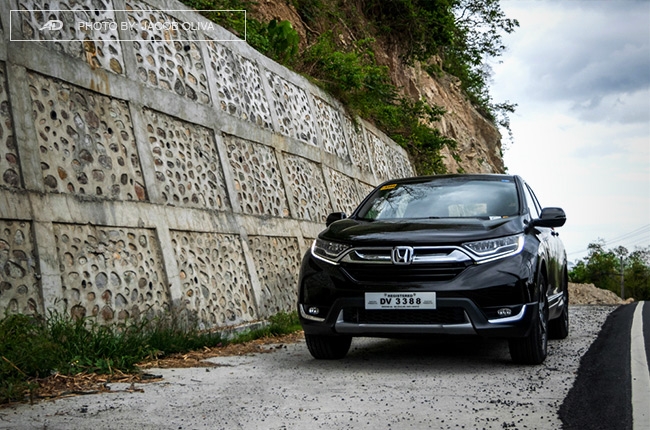
I was quite surprised when I’ve driven the entry-level CR-V 2.0 S. Why? Its P1,648,000 price tag made me expect less from it, considering that it’s P438,000 less than its top-of-the-line SX counterpart that I reviewed before. I had a blast with that range-topper, but I didn’t expect this base model to give me the same great feeling. I was wrong.
I don’t mind fewer seats and tech features, or the lack of off-road capabilities; driving this car is like waking up to a nicely-prepared breakfast from a good eight hours of sleep. It did put a satisfied smile on my face.
Specifications
Engine
2.0 LFuel Type
GasolinePerformance
154 hp @ 6,500 rpmTransmission
CVT-
Summary
-
Name Honda CR-V 2.0 S CVT Body Type Crossover Price ₱1,668,000 Transmission Category CVT -
Engine
-
Engine Size 2.0 L Displacement 1,999 cc Number of Cylinders 4 Number of Valves 16 Transmission Type Continuously Variable Transmission -
Performance
-
Drivetrain Front-Wheel Drive Max Output (hp) 154 hp @ 6,500 rpm Max Torque (nm) 189 Nm @ 4,300 rpm -
Economy & Environment
-
Fuel Type Gasoline Emissions Standard n/a Fuel Capacity 57.0 L Combined Fuel Consumption n/a -
Dimensions
-
Length 4,571 mm Width 1,855 mm Height 1,657 mm Wheelbase 2,660 mm Turning Circle 12 m Ground Clearance 198 mm Trunk Capacity 522 L Number of Doors 5 Number of Seats 5 -
Safety & Security
-
Driver's Airbag 1 Front Passenger's Airbag 1 Side Airbag 2 Curtain Airbag 2 Knee Airbag Auto Brake System Electronic Brake Distribution Anti-lock Brake System (ABS) With Electronic Brake Force Distribution
Immobilizer Security Alarm Stability Control Electronic Door Locks Speed Sensing Door Locks ISOFIX Lane Departure Warning System Blind-Spot Detection System -
Features
-
Cruise Control Front Parking Sensors Rear Parking Sensors Leather Upholstery Push Start Button Wheel Size 18 in Wheels Metal Type Alloy Airconditioning System Intelligent-Dual Zone Automatic Entertainment System 7-inch display audio with HDMI via 4 speakers Connectivity Bluetooth, USB Navigation Ready Warranty 3 Years (100,000 km) Keyless Entry Roof Rack Sunroof Electric Adjustable Seats Power Steering Power Windows Power Outlet Steering Wheel Audio Control -
Technology
-
Active Park Assist Hill Start Assist AWD Modes n/a Tire Pressure Monitoring Heads-up Display Power Liftgate Start-stop System
Colors
Latest Review
-
Addictively excessive: The Ford Ranger Raptor Twin Turbo V6 / Review
The Ford Ranger Raptor Twin Turbo V6 is one crazy pickup truck. Wondering why? Just keep reading.
4.6 / 5 -
The Kia Carnival gives you more: More seats, more comfort, and more practicality / Review
The Kia Carnival is a three-row MPV designed for executives and families. It combines comfort, technology, and practicality, making it a strong choice for those looking for a premium people...
4.2 / 5 -
The Jetour Ice Cream: A pint-sized EV that’s hard to ignore / Review
The Jetour Ice Cream is an adorable, pint-sized electric car that’s made for the city. Affordable and stylish, it’s easy to love, but does it tick all the boxes for you?
3.7 / 5
Popular Articles
-
Cheapest cars under P700,000 in the Philippines
Jerome Tresvalles · Sep 02, 2024
-
First car or next car, the Ford EcoSport is a tough package to beat
Jun 18, 2021
-
Car Maintenance checklist and guide – here’s everything you need to know
Earl Lee · Jan 12, 2021
-
Most fuel efficient family cars in the Philippines
Bryan Aaron Rivera · Nov 27, 2020
-
2021 Geely Okavango — Everything you need to know
Joey Deriquito · Nov 19, 2020
-
Family cars in the Philippines with the biggest trunks
Sep 20, 2023
-
Head to head: Toyota Rush vs. Suzuki XL7
Joey Deriquito · Oct 28, 2020
-
Why oil changes are important for your car
Earl Lee · Nov 10, 2020
-
2021 Kia Stonic — What you need to know about it
Joey Deriquito · Oct 16, 2020
-
Top 7 tips for buying a used car in the Philippines
Joey Deriquito · Nov 26, 2020

